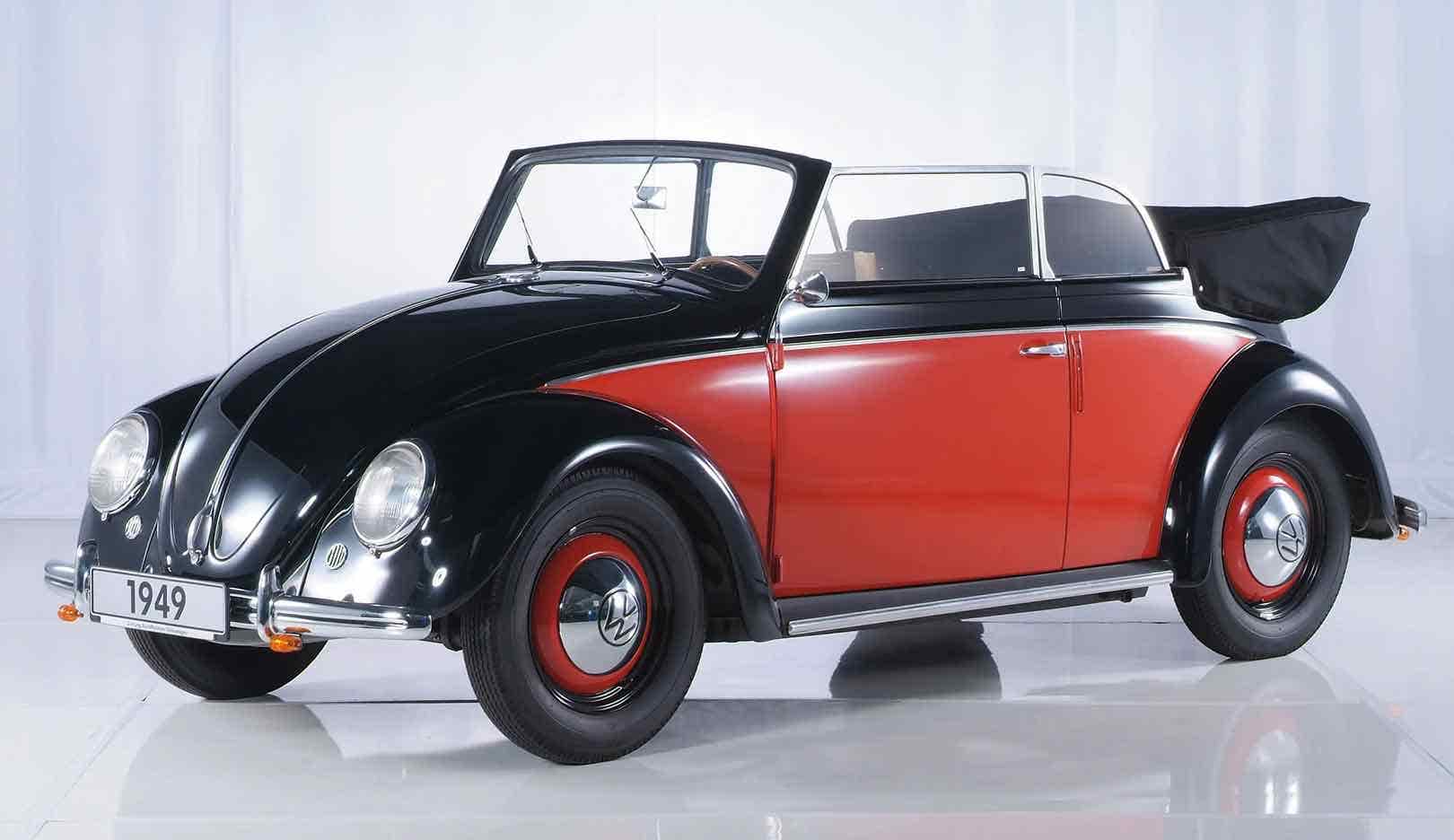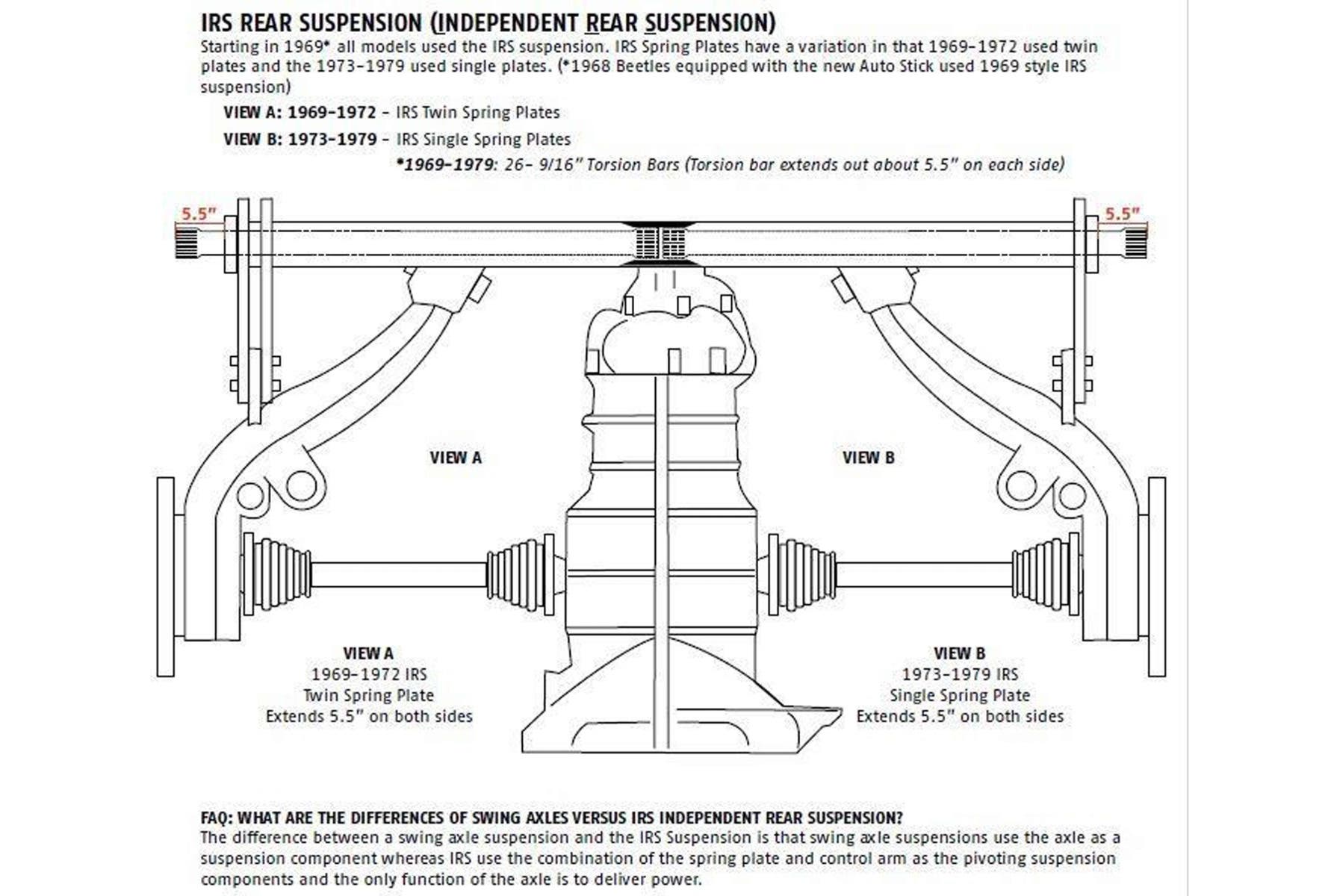A Visual History of the VW Beetle
The VW Beetle has earned a devoted following from both VW fans and occasional car owners over the course of its long history, becoming an iconic vehicle around the world. The Volkswagen Beetle, also known as the Type 1 or T1, began its illustrious history in Germany as the "people's car," or Volkswagen. The Ferdinand Porsche-designed T1 was known by several titles in addition to its German name, Kafer, because of its curved shape and link with affordability.
VW Beetle - The Evolution
1930
The Designer
Talented Ferdinand Porsche began pursuing this his own idea of a people's car with colleague Karl Rabe. In 1930, at age 55, he established a Konstruktionsburo, an independent design consultancy, in Stuttgart.

Did you know?

The Auto Union and its "Wanderer" brand were the subject of Porsche Engineering's first agreement. Porsche was commissioned to create a car with a 2-liter, 6-cylinder engine. The Porsche Type 7 was a four-door sedan that was created between 1930 and 1931 using this design.
1933
The Dictator
The dictator, of course, was Adolf Hitler, the failed artist and former army corporal who got himself elected German chancellor in 1933.
The People's Car
With the vast majority of his countrymen still demoralized by World War I and suffering during the Great Depression, Hitler and his National Socialist Party viewed a revived economy and increased consumerism as ways to win support for the military adventurism and rank genocide they had long sought. So it was that Hitler began to champion a small, affordable "people's car" -- a Volkswagen.

Did you know?

Giving birth in a Beetle – Although giving birth in a car isn’t ideal, those born in Beetles received financial compensation. Volkswagen used to award those particular babies with bonds.
1934
The Meeting
In the early 1930s, Germany's new Führer was touting a national superhighway system the "Autobahnen" and the need for affordable cars to traverse them.
A politically connected Mercedes-Benz executive, Jakob Werlin, arranged for Porsche to meet with Adolf Hitler in 1934.
In Jan 1935 Porsche sent the Führer a few notes in advance of their meeting that were likely to be accepted: The notes suggested the peoples car would be tough and roomy, cruise at its top speed of 100 kph (62 mph), get about 40 miles per gallon of petrol on average, easily climb hills and have an air-cooled engine that was simple to maintain (service stations were scarce, and German winters can be harsh).
It must have adequate space for the ideal Nazi family of two parents, three children, and their luggage, and its platform must be versatile. The last has the unsettling feature of having military applications. The two eventually met agreed to Porsches suggested requirements however Adolf Hitler dropped the final bombshell, that it must cost no more than 1,000 Reichsmarks!
With this brief, Porsches team went to work immediately on two hand-built prototypes, which were evolutions on the Type 60 and Type 32 which were already started by the team at Porsche Konstruktionsburo. A sedan called the V1 and a convertible called the V2 were produced refined down to a selection of V3 mod were displayed at the Berlin Motor show. Hitler liked these so much that demanded that the V3 go into production.
However, when RDA members vocally objected to the sub-1,000 Reichsmark price, which posed a real threat to their business, an irate Hitler turned the project into a fully state-run enterprise of the Deutsche Arbeitsfront (DAF), the country's labour union. The motto of the labour union was ‘Kraft durch Freude’ which translates to “Strength through Joy and prompted the official name of the V3 as the KDF Wagen.



1937-39
The Cornerstone
Hitler decided in 1937 that the new KDF would be constructed at a brand-new location. Land was obtained in northern Germany, close to Castle Wolfsburg, and the cornerstone was laid by Hitler on May 26, 1938. The plant swiftly grew on the northern bank of the Mitteland Canal. Although testing on the KDF Wagen didn't start until July 1939, the final prototypes, known as VW39 and virtually identical to the future Volkswagen Beetle, had already been completed.

1940
War Vehicles
While testing was complete and the production of KDF Wagens were trickling out from the factory. At this time War had been raging almost a year and production on civilian vehicles had quickly turned to beetle-based military vehicles such as the Type 62 Kubelwagen and Type 166 amphibious Schwimmwagen.

Iconic Moment
Volkswagen & The War Effort
With the start of World War II, Volkswagenwerk GmbH is experiencing significant financial difficulties. Priority is given to armaments' interests over the projected production of public cars. Ironically not one German civilian received a KDF Wagen as part of their gallant stamp-collecting efforts. In turn, funds were put towards mobilising the German army with the Type 62 which shared the same platform as the KDF-Wagen.
1944 - 1945
The End Of The War
More than two-thirds of the Volkswagen KDF factory in Wolfsburg lay in ruins by the end of 1944. By the spring of 1945, The British Royal Electrical and Mechanical Engineers unit under the command of Major Ivan Hirst had taken control of the town and the factory.
The British army, who had control of the KDF-wagen plant (now called Wolfsburg), placed an order for 20,000 Beetle saloons, 500 vans, 500 trailers for the post office, and 200 trailers for the British Army. The order was placed in September 1945, and the vehicles were expected to be delivered in July 1946. This marks the start of production for the Volkswagen Beetle.
Just a couple of weeks after this initial order was placed, it was doubled – the British Army now wanted 40,000 Beetles built!


1946
10,000th Beetle Produced
After overcoming massive challenges, which often seemed insurmountable, the 10,000th Volkswagen Beetle emerged from the factory in Wolfsburg. It was a feat few had thought was achievable, with many not expecting more than a handful of vehicles to ever leave the jury-rigged Volkswagen factory.

1947
The Beetle Is On The Rise
With the popularity of the Volkswagen Beetle on the rise, there was talk of exporting the vehicles outside of Germany, but first several issues had to be resolved to make the Beetle a potential contender on the wider market.
Major Ivan Hirst of the British Army, who was overseeing the Wolfsburg factory, told factory management “The cars must already be driven in before delivery. Each car much have clocked up 1,000 km and then be decarbonised etc. The bodywork must be of a high standard. Chrome headlights, bumpers and wheel caps are required. Seat covers should be of a higher quality, made out of the same material used for the new chauffeur uniforms.”
These quality improvements were made, and unveiled at the Paris Motor Show in October 1947. It clearly worked, too, as an order was made for Beetles to be exported to the Netherlands. It was only five cars, initially, but it was the first tiny order which would start the VW Beetle on its way to becoming an internationally recognised automotive icon.

1949
Karmann Cabriolet Beetle Introduced
From 1949, open-top versions of the Beetle are being produced to offer buyers a flair of luxury in the austere post-war years. A company called 'Hebmüller' develops an elegant 2+2 seater cabriolet based on the Beetle and receives a production order from Volkswagen. 696 cars are built, and are sold by official Volkswagen dealers. Sadly, a devastating fire destroys the complete Hebmüller plant and the company is forced into receivership. Some of the remaining cars are completed by Karmann in Osnabrück, another coachbuilder with a long tradition.
Karmann had also developed a Beetle cabriolet based on the 'Export' model. As opposed to the Hebmüller version, Karmann proudly markets its car as a four-window model with usable rear seat. The opened soft-top rests at the rear of the body, to provide sufficient rear legroom and luggage space. Volkswagen gives the car its official blessing and delivers chassis to the plant in Osnabrück. 1949 Wolfsburg orders a pre-production of 25 vehicles. After the Karmann prototypes successfully complete the comprehensive testing by Volkswagen, Wolfsburg orders 1.000 customer cars. A huge number for a small coachbuilder. Production is increased to 10.000 vehicles by the end of 1952.

1950
The Export Of Beetle Commenced
Ben Pon sold 56 vehicles in Holland, one of VW's initial export markets, and Nordhoff called on him in 1949 to try his hand at the American market. By this time, a few cars had found their way to the United States, transported there by reservists as the occupation came to an end. Pon set out for New York in a single VW with some spare components, but the trip ended in disaster due to the country's persistent anti-German prejudice. Pon was compelled to sell the vehicle and all associated parts in order to cover his accommodation costs and fund his return trip to Europe. Later that year, Nordhoff made an attempt on his own but was unsuccessful. In addition, ownership of VW was finally transferred from the Allied Military Government to the West German federal government. The first civilian cabriolet built by Karmann appears in 1949.
The formal export of a VW to the United States has officially taken place. Max Hoffman, an importer of foreign vehicles from the East Coast, was chosen as the sole VW importer throughout the continent east of the Mississippi River. Hoffman sold 330 Volkswagens, primarily to other dealers across the country. In order to expedite orders for attractive sports cars like Porsches and Jaguars, dealers would agree to purchase one or two VWs from Hoffman. The cars were affordable, and dealers discover that it was not too difficult to sell them.


1955
The 1 Millionth Beetle
When the 1,000,000th Beetle rolled off the production line on 5 August 1955, Volkswagen decided to do something a little bit special. The gold-painted Oval, complete with rhinestone-encrusted bumpers was VW's way of celebrating their success and in doing so, they created a VW legend!

Did you know?

Nearly every country has its own nickname in its language for the Beetle. In France, they call it “Coccinelle” which means ladybug. Italy calls it Beetle but in their own language it’s “Maggiolino”. Bolivia calls it the “Peta”, which means turtle, and Indonesia uses “Kodak” (frog) to refer to the car.
Iconic Moment
Without The Beetle There Would Be No VW
VW's international emergence was only made possible due to the VW Beetle. It was offered for sale in 46 nations by 1952, and over the years, it was manufactured on assembly lines in 14 nations other than Germany. With 10.3 million vehicles produced last year, Volkswagen is currently the largest automaker in the world. Without the Beetle there would be no VW!
1958
Introduction Of A Larger Rear Window
Volkswagen altered the rear window of the Beetle once more, widening the opening for 1958. Volkswagen also installed tubeless tyres for the first time a year earlier.

1960
Volkswagen's smart, frequently self-mocking advertising expanded over the 1950s and 1960s.
Developments to the Beetle design continued and during this time was equipped with a fully synchronised transmission, an automatic choke, and a pump-style windshield-washer system were all added to the Volkswagen Beetle in 1961. The engine was tweaked and the power output was Increased to 40 horsepower.

1967
Volkswagen increased the Beetle's engine's displacement to 1493 cc, adding 3 horsepower, and updated the emblem to read "1500." Additionally, 12-volt electronics, dual-circuit brakes and two-speed windscreen wipers were added to the Bug in 1967.

1968
The Automatic Stick Shift semi-automatic transmission option was developed by VW in 1968. It was essentially a standard Beetle four-speed manual transmission with the first gear deleted, a torque converter installed, and a vacuum-operated clutch that disengaged whenever the shifter was pressed. The system took care of the rest; all you had to do was move the lever to the desired gate, let go, and press the accelerator. The Sportomatic technology was shared with Porsche, but VW alone was responsible for the "Automatic" decklid badging.

1969
In 1969 VW introduced double joint rear axles, or IRS (Independent Rear Suspension) on all US models (but not elsewhere). Other updates included safer dual front circuit discs while the US retained drum brakes. Warning lights in speedometer get letters for identification.
A steering lock was included in the steering column and the hot air vents were moved slightly rearward. Finally the speedometer gets 1/10th mile indicator in late 69.


1971-1975
The Super Beetle
The Volkswagen Beetle had lots of room to expand, whereas many American automobile models had to become smaller and less powerful in order to comply with the new regulations and laws. The VW 1301, also referred to as the Super Beetle, was first introduced in 1971.
The larger Super Beetle was the result of modernising the front end of the original Beetle, which swapped out its cumbersome dual torsion beam suspension with a contemporary MacPherson strut arrangement. By doing this and slightly lengthening the bonnet, VW created a vehicle with improved handling, 80% more trunk space, and a smaller turning circle while having a larger engine.
In 1975, the final year of the Super Beetle Sedan's manufacture, the air-cooled four-cylinder engine was given the Air Flow Control (AFC) Fuel Injection technology, which is akin to Bosch's Jetronic injection.
1975 - Production Ends At Wolfsburg
In 1975, another significant event occurred in the History of the VW Beetle. Wolfsburg produces its final Beetle. Manufacturing moves to other European sites, as well as Puebla, Mexico.

1976-1977
U.S Sales Dwindle
The Beetle's popularity started to decline by 1976. The writing was on the wall when VW unveiled the Golf (known as the Rabbit in America). After 1976, there would be no new Beetle sedans sold in the United States.
Convertibles Still Being Produced
The convertible Beetle may not have been finished yet, but the sedan was. Through 1979, Volkswagen still sold the cabriolet. That model was eventually discontinued but Beetle manufacture went on in Mexico and Brazil.

2003
The Final Curtain
The last of 21,529,464 Volkswagen Beetles built since World War II rolls off the production line at Volkswagen's plant in Puebla, Mexico on the 30th July 2003.





